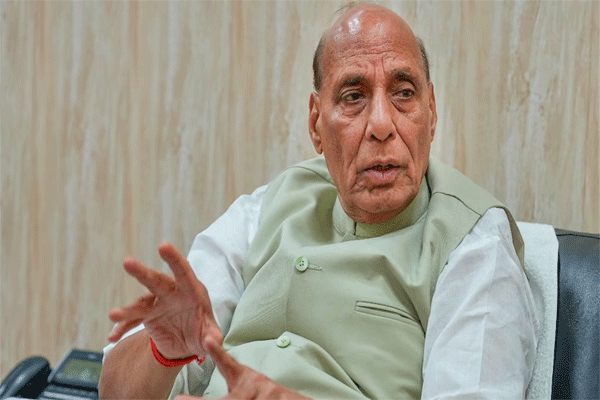National Health Mission (NHM)
National Health Mission (NHM): Aims to provide accessible, affordable, and quality healthcare to the rural population.The National Health Mission (NHM) is a flagship initiative launched by the Government of India in 2013 to address the health needs of the rural and urban populations, with a special focus on marginalized and vulnerable communities. The NHM aims to strengthen the healthcare infrastructure, improve health outcomes, and ensure universal access to equitable, affordable, and quality healthcare services across the country.### Objectives of the National Health Mission:1. **Universal Access to Healthcare**: To provide accessible, affordable, and quality healthcare services to all, especially the poor and vulnerable sections of society. 2. **Strengthening Healthcare Infrastructure**: To improve the infrastructure of healthcare facilities at all levels, from primary health centers to tertiary care hospitals.3. **Reduction of Infant and Maternal Mortality**: To reduce the Infant Mortality Rate (IMR) and Maternal Mortality Ratio (MMR) through improved maternal and child healthcare services.4. **Control of Communicable and Non-Communicable Diseases**: To control and prevent the spread of communicable diseases and manage non-communicable diseases through early detection, treatment, and health education.5. **Population Stabilization**: To promote family planning and reproductive health services to achieve population stabilization.### Key Components of the NHM:1. **National Rural Health Mission (NRHM)**: - **Focus**: To improve healthcare delivery in rural areas by strengthening primary healthcare infrastructure and services. - **Key Initiatives**: Establishment of Accredited Social Health Activists (ASHAs), upgrading of primary health centers (PHCs) and community health centers (CHCs), and implementation of health programs targeting maternal and child health, immunization, and nutrition.2. **National Urban Health Mission (NUHM)**: - **Focus**: To address the health needs of the urban population, particularly the urban poor and slum dwellers. - **Key Initiatives**: Establishment of Urban Primary Health Centers (UPHCs), Urban Community Health Centers (UCHCs), and outreach services to provide comprehensive primary healthcare in urban areas.### Key Features of NHM:1. **Accredited Social Health Activists (ASHAs)**: - ASHAs are community health workers who act as a link between the community and the healthcare system, promoting health awareness, mobilizing community participation, and facilitating access to health services.2. **Janani Suraksha Yojana (JSY)**: - JSY is a safe motherhood intervention under NHM that promotes institutional deliveries by providing financial incentives to pregnant women, thereby reducing maternal and neonatal mortality.3. **Janani Shishu Suraksha Karyakram (JSSK)**: - JSSK provides free and cashless services to pregnant women and sick newborns, including free drugs, diagnostics, transport, and treatment, to ensure better health outcomes for mothers and children.4. **Reproductive, Maternal, Newborn, Child, and Adolescent Health (RMNCH+A)**: - RMNCH+A is a comprehensive approach that addresses the health needs of women, children, and adolescents through integrated services and interventions across the life cycle.5. **National Ambulance Services**: - NHM supports the establishment of emergency ambulance services, such as 108 and 102 ambulance services, to provide timely medical assistance and transport to healthcare facilities.6. **Free Drugs and Diagnostics**: - NHM promotes the provision of essential drugs and diagnostics free of cost at public healthcare facilities to reduce out-of-pocket expenditures and improve access to healthcare.7. **Health and Wellness Centers (HWCs)**: - Under Ayushman Bharat, HWCs are being established to provide comprehensive primary healthcare services, including preventive, promotive, and curative care, to the community.### Achievements of NHM:1. **Improved Health Indicators**: - Significant improvements in key health indicators, such as the reduction in IMR and MMR, increased institutional deliveries, and higher immunization coverage.2. **Enhanced Healthcare Infrastructure**: - Strengthening of healthcare infrastructure, with the establishment and upgradation of PHCs, CHCs, and urban health centers, leading to better healthcare delivery.3. **Increased Access to Healthcare**: - Improved access to healthcare services, particularly for marginalized and vulnerable populations, through ASHAs, mobile health units, and outreach programs.4. **Control of Communicable Diseases**: - Successful control and management of communicable diseases, such as tuberculosis, malaria, and HIV/AIDS, through targeted interventions and programs.### Challenges and Future Directions:1. **Quality of Care**: - Ensuring the quality of healthcare services and addressing gaps in service delivery, particularly in remote and underserved areas.2. **Human Reso

National Health Mission (NHM): Aims to provide accessible, affordable, and quality healthcare to the rural population.
The National Health Mission (NHM) is a flagship initiative launched by the Government of India in 2013 to address the health needs of the rural and urban populations, with a special focus on marginalized and vulnerable communities. The NHM aims to strengthen the healthcare infrastructure, improve health outcomes, and ensure universal access to equitable, affordable, and quality healthcare services across the country.
### Objectives of the National Health Mission:
1. **Universal Access to Healthcare**: To provide accessible, affordable, and quality healthcare services to all, especially the poor and vulnerable sections of society.
2. **Strengthening Healthcare Infrastructure**: To improve the infrastructure of healthcare facilities at all levels, from primary health centers to tertiary care hospitals.
3. **Reduction of Infant and Maternal Mortality**: To reduce the Infant Mortality Rate (IMR) and Maternal Mortality Ratio (MMR) through improved maternal and child healthcare services.
4. **Control of Communicable and Non-Communicable Diseases**: To control and prevent the spread of communicable diseases and manage non-communicable diseases through early detection, treatment, and health education.
5. **Population Stabilization**: To promote family planning and reproductive health services to achieve population stabilization.
### Key Components of the NHM:
1. **National Rural Health Mission (NRHM)**:
- **Focus**: To improve healthcare delivery in rural areas by strengthening primary healthcare infrastructure and services.
- **Key Initiatives**: Establishment of Accredited Social Health Activists (ASHAs), upgrading of primary health centers (PHCs) and community health centers (CHCs), and implementation of health programs targeting maternal and child health, immunization, and nutrition.
2. **National Urban Health Mission (NUHM)**:
- **Focus**: To address the health needs of the urban population, particularly the urban poor and slum dwellers.
- **Key Initiatives**: Establishment of Urban Primary Health Centers (UPHCs), Urban Community Health Centers (UCHCs), and outreach services to provide comprehensive primary healthcare in urban areas.
### Key Features of NHM:
1. **Accredited Social Health Activists (ASHAs)**:
- ASHAs are community health workers who act as a link between the community and the healthcare system, promoting health awareness, mobilizing community participation, and facilitating access to health services.
2. **Janani Suraksha Yojana (JSY)**:
- JSY is a safe motherhood intervention under NHM that promotes institutional deliveries by providing financial incentives to pregnant women, thereby reducing maternal and neonatal mortality.
3. **Janani Shishu Suraksha Karyakram (JSSK)**:
- JSSK provides free and cashless services to pregnant women and sick newborns, including free drugs, diagnostics, transport, and treatment, to ensure better health outcomes for mothers and children.
4. **Reproductive, Maternal, Newborn, Child, and Adolescent Health (RMNCH+A)**:
- RMNCH+A is a comprehensive approach that addresses the health needs of women, children, and adolescents through integrated services and interventions across the life cycle.
5. **National Ambulance Services**:
- NHM supports the establishment of emergency ambulance services, such as 108 and 102 ambulance services, to provide timely medical assistance and transport to healthcare facilities.
6. **Free Drugs and Diagnostics**:
- NHM promotes the provision of essential drugs and diagnostics free of cost at public healthcare facilities to reduce out-of-pocket expenditures and improve access to healthcare.
7. **Health and Wellness Centers (HWCs)**:
- Under Ayushman Bharat, HWCs are being established to provide comprehensive primary healthcare services, including preventive, promotive, and curative care, to the community.
### Achievements of NHM:
1. **Improved Health Indicators**:
- Significant improvements in key health indicators, such as the reduction in IMR and MMR, increased institutional deliveries, and higher immunization coverage.
2. **Enhanced Healthcare Infrastructure**:
- Strengthening of healthcare infrastructure, with the establishment and upgradation of PHCs, CHCs, and urban health centers, leading to better healthcare delivery.
3. **Increased Access to Healthcare**:
- Improved access to healthcare services, particularly for marginalized and vulnerable populations, through ASHAs, mobile health units, and outreach programs.
4. **Control of Communicable Diseases**:
- Successful control and management of communicable diseases, such as tuberculosis, malaria, and HIV/AIDS, through targeted interventions and programs.
### Challenges and Future Directions:
1. **Quality of Care**:
- Ensuring the quality of healthcare services and addressing gaps in service delivery, particularly in remote and underserved areas.
2. **Human Resource Constraints**:
- Addressing the shortage of healthcare professionals and ensuring adequate training and capacity building to meet the growing healthcare needs.
3. **Sustainable Financing**:
- Ensuring sustainable financing for healthcare programs and exploring innovative financing mechanisms to support health initiatives.
4. **Integration of Services**:
- Promoting the integration of health services across different levels of care and enhancing coordination between various health programs for better outcomes.
### Conclusion:
The National Health Mission (NHM) is a comprehensive initiative aimed at transforming the healthcare landscape in India by ensuring universal access to quality healthcare services. By addressing the health needs of rural and urban populations, improving healthcare infrastructure, and focusing on maternal and child health, NHM has made significant strides in enhancing health outcomes and promoting equitable healthcare. Continued efforts to address challenges, strengthen healthcare delivery, and ensure sustainable financing will be crucial for achieving the long-term goals of NHM and ensuring the health and well-being of all citizens.
What's Your Reaction?









.png)
.png)
.png)





.jpg)

.jpg)

.jpg)

.png)









